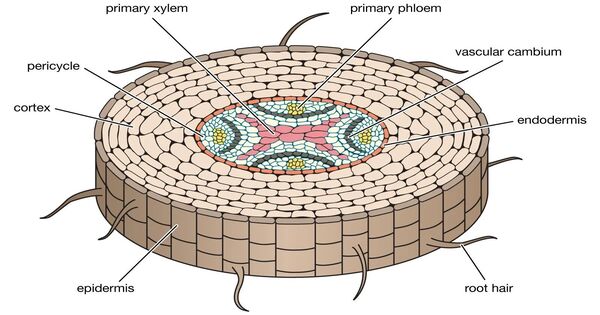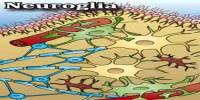The vascular cambium functions as a lateral meristem. It is a form of meristem tissue present in vascular plants, specifically their stems and roots. It is responsible for secondary growth, which causes woody plants’ stems and roots to thicken. It is located between the stem and root and serves as the source of both the secondary xylem (inwards, toward the pith) and the secondary phloem (outwards). Only a few leaves possess a vascular cambium.
Vascular cambium is a form of meristem, which is a tissue made up of embryonic (non-specialized) cells that can develop into other (more differentiated) plant tissues. Primary meristems are the apical meristems found at the root and shoot tips. Another lateral meristem is the cork cambium, which produces cork, part of the bark.
Location and Structure
In dicotyledonous plants, the vascular cambium is a thin layer of actively dividing cells found between the xylem and phloem in the vascular bundle. Secondary growth is limited or absent in monocotyledonous plants, hence vascular cambium may not exist or be limited in extent.
Function
The vascular cambium’s principal role is to produce secondary xylem and phloem. As the vascular cambium cells divide, they differentiate into xylem cells on the inside (the core of the stem or root) and phloem cells on the outside (the bark).
Secondary Growth
Secondary growth occurs due to the activity of the vascular cambium, which adds layers of secondary xylem (wood) to the inside and secondary phloem to the outside. This results in the thickening of the stems and roots, providing mechanical support and allowing for the transport of water, minerals, and nutrients.
Annual Rings
In temperate regions, the activity of the vascular cambium varies seasonally, resulting in the formation of growth rings in the wood of trees. This can be used to determine the age of the tree and to study past environmental conditions through dendrochronology.
Structure of Wood
The arrangement of cells formed by the vascular cambium results in different patterns in the wood. Xylem cells produced early in the growing season have larger and thinner cell walls (earlywood), whereas those produced later in the season are smaller and have thicker cell walls.
Overall, the vascular cambium is critical to the secondary growth of woody plants, providing structural support and allowing them to reach great size and durability.
















